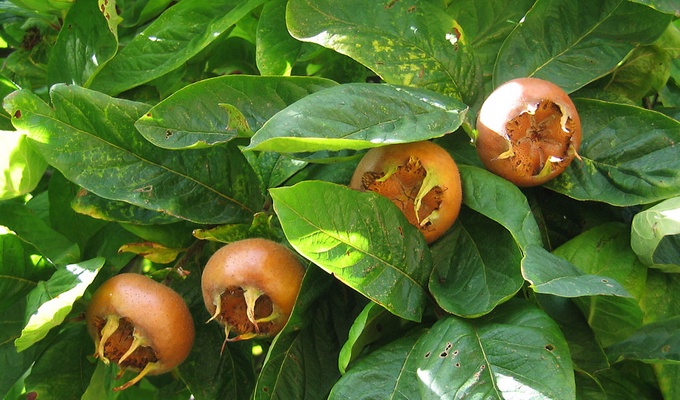Mespilus germanica, known as the medlar or common medlar, is a large shrub or small tree in the rose family Rosaceae. The fruit of this tree, also called medlar, has been cultivated since Roman times, is usually available in winter and eaten when bletted. It may be eaten raw and in a range of cooked dishes.
Ripe medlars are taken from the tree, placed somewhere cool, and allowed to further ripen for several weeks. Ideally, the fruit should be harvested from the tree immediately following a hard frost, which starts the bletting process by breaking down cell walls and speeding softening.
Once the process is complete, the medlar flesh will have broken down
enough that it can be spooned out of the skin. The taste of the sticky,
mushy substance has been compared to sweet dates and dry applesauce,
with a hint of cinnamon.
In the southwest of England it historically had a number of vulgar nicknames, such as open-arse and monkey's bottom, due to the appearance of its large calyx.
Note to be confused with azarole, also called the Mediterranean medlar, which is a different fruit and less likely to be referenced in historical texts.
